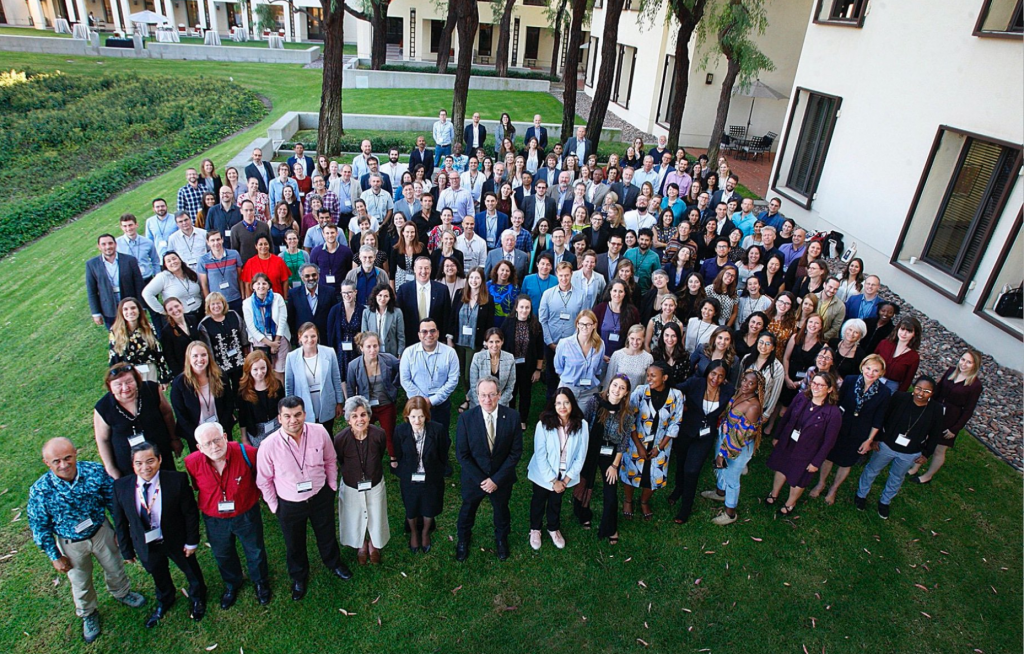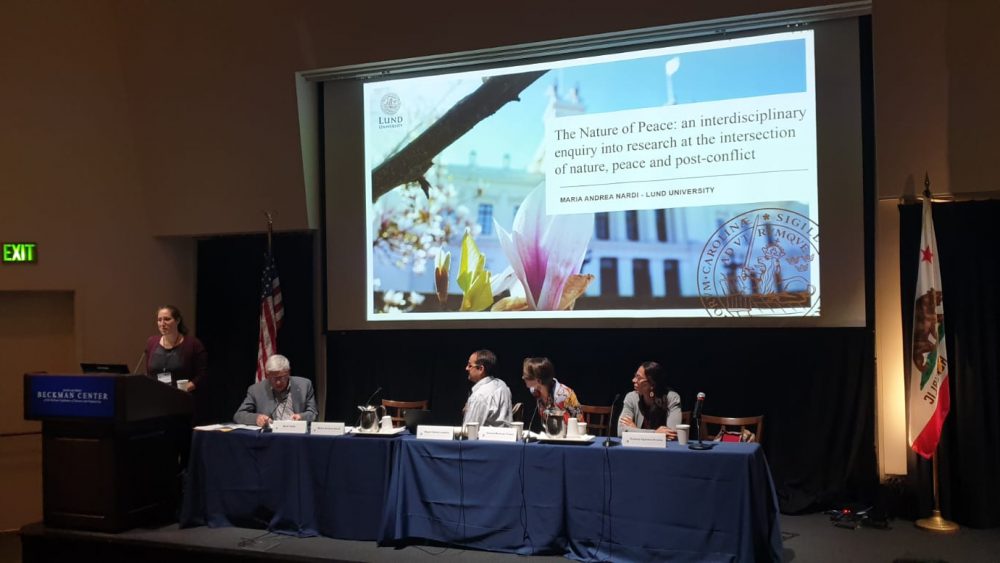Last week, the First Environmental Peacebuilding Conference in Irvine, California (US) brought together almost 250 researchers, practitioners, and decision-makers dealing with human-nature interactions in conflict-affected settings. It was a very intense and enlightening three-day conference (October 23- 25) for exchanging ideas and projects in around 8 training sessions and 40 panel sessions.
Our project, the Nature of Peace, an interdisciplinary research initiative on the links between the natural environment and peace in post-conflict societies, contributed during the sessions to broaden the debate on the state of the art of the field and the analysis on Colombia’s cases.

The first to present was Andrea Nardi, researcher at the Raoul Wallenberg Institute of Human Rights and Humanitarian Law, who explained the main findings of a systematic literature review conducted to understand the intersection of nature, peace, and post-conflict. Nardi pointed out that existing literature do not distinguish the different levels of vulnerability of specific groups, like women or indigenous communities, in the post-conflict transitions and the changes brought by it in regards the access to natural resources or the exposure to environmental pollution.
She also emphasized the need to revise the ontological perceptions about nature in the field of environmental peacebuilding, since the dominant framing of nature as a source to be exploited is still the most frequent conceptualization present in the papers. The study she presented was supported by the Pufendorf Institute for Advanced Studies at Lund University between September 2017 and April 2018.
Colombia’s analysis at Irvine
On Thursday (October 24), Torsten Krause, Britta Sjöstedt and Laura Betancur participated in the panel session “Changing Environment: Exploring the Links and Consequences of the Peace Agreement in Colombia’s Natural Environment”, moderated by Helena Durán, environmental justice researcher from Dejusticia, a think tank based in Bogotá, Colombia.

Krause, Associate Senior Lecturer from Lund University Centre for Sustainability Studies, gave a critical explanation on how the current and pressing deforestation dynamic in the Amazon forest is caused by the contradictory practices framed under the double discourses of the Colombian government, which formally expresses its intention to protect the forest while still promoting mining and cattle ranching activities in the region.
Also focusing on the Amazon, Sjöstedt, Senior lecturer at the Department of Law, offered an explanation on how international law frameworks can contribute to the protection of this region, specifically of the Chiribiquete National Natural Park, the largest protected area in Colombia and added to UNESCO’s World Heritage List in July 2018.
In contrast, Laura, Colombian journalist who recently graduated from the Lumes programme at Lucsus, invited the audience to ‘travel’ to a different Colombian landscape. Her presentation focused on the changes in land distribution and water access in a small village in the highlands of Las Hermosas region in the southwest of the country. With this very specific case, she raised awareness on the micro-level dynamics of inequalities that are being reproduced due to interventions carried out by the State, which became the authority on water and property after the FARC guerrilla members left the region.
After our presentations, we discussed how land distribution and conflicts caused by mining remain the major obstacles to avoid negative environmental impacts in the post-peace agreement phase in Colombia.

